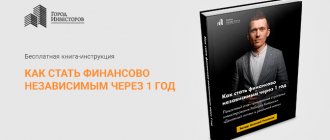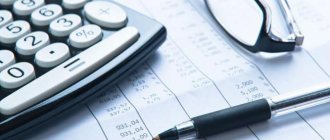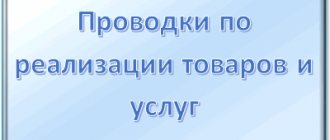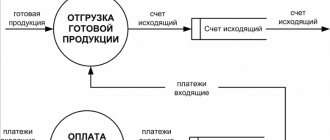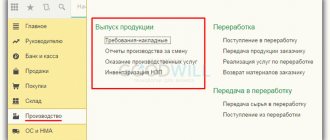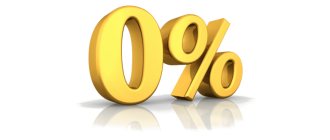When is it not necessary to charge VAT?
If the costs of goods (services) transferred for one’s own needs can be taken into account as expenses that reduce taxable profit, VAT does not need to be charged.
There is also no need to charge VAT:
- when holding corporate events prepared by third parties;
- when transferring goods (work, services) listed in paragraphs 2 and 3 of Article 149 of the Tax Code of the Russian Federation.
In addition, VAT should not be charged when transferring goods (performing work, providing services) for one’s own needs:
- organizations applying special tax regimes. They are not VAT payers on all transactions, except for the importation of goods into Russia, transactions under joint activity agreements, trust management of property, as well as under concession agreements (clause 2 of article 346.11, clause 3 of article 346.1, paragraph 3 of clause. 4 Article 346.26 of the Tax Code of the Russian Federation);
- organizations that transfer goods (work, services) to structural units located in member states of the Customs Union (letter of the Ministry of Finance of Russia dated February 28, 2013 No. 03-07-08/5906).
Situation: is it necessary to charge VAT on the cost of transferred goods (work performed, services rendered) that were not taken into account when calculating income tax? According to the Tax Code, such expenses can reduce taxable profit
No no need.
The object of VAT taxation is transactions involving the transfer of goods (work, services) for one’s own needs, the costs of which are not taken into account when calculating income tax (subclause 2, clause 1, article 146 of the Tax Code of the Russian Federation). From this definition it follows that the obligation to charge VAT is directly related to the impossibility of including expenses for such operations as expenses that reduce taxable profit.
Taxable profit is reduced by any economically justified and documented expenses associated with activities aimed at generating income (clause 1 of Article 252 of the Tax Code of the Russian Federation). A closed list of expenses that are not taken into account when taxing profits is given in Article 270 of the Tax Code of the Russian Federation.
If expenses arising from the transfer of goods (work, services) for one’s own needs meet the criteria of Article 252 and are not specified in Article 270 of the Tax Code of the Russian Federation, then they should be included in the costs that reduce taxable profit. And this excludes the attribution of such expenses to the object of VAT taxation provided for in subparagraph 2 of paragraph 1 of Article 146 of the Tax Code of the Russian Federation, even if the organization did not use the legal right to reduce taxable profit and incorrectly reflected expenses in tax accounting.
Thus, if an organization mistakenly did not include in expenses the cost of goods (work, services) transferred for its own needs, it is not obliged to charge VAT on this operation.
The validity of this approach is confirmed by the Presidium of the Supreme Arbitration Court of the Russian Federation in Resolution No. 75/12 dated June 19, 2012.
It should be noted that, in fact, the Resolution of the Presidium of the Supreme Arbitration Court of the Russian Federation dated June 19, 2012 No. 75/12 is a precedent. It says that previously adopted judicial acts in similar cases can be revised on the basis of paragraph 5 of part 3 of Article 311 of the Arbitration Procedure Code of the Russian Federation (based on newly discovered circumstances).
Situation: is it necessary to charge VAT on the cost of defective products (irreparable defects) transferred to another structural unit of the organization for processing (use as industrial raw materials)?
No no need.
VAT on the transfer of goods (performance of work, provision of services) for one’s own needs must be accrued only if two conditions are simultaneously met:
- there was an actual transfer of goods (performance of work, provision of services) to the structural divisions of the organization, including service industries and farms or separate divisions (letter of the Ministry of Finance of Russia dated June 16, 2005 No. 03-04-11/132 and the Ministry of Taxes of Russia dated January 21 2003 No. 03-1-08/204/26-B088);
- costs for the acquisition of transferred goods (works, services) cannot be taken into account as expenses that reduce taxable profit.
If an organization uses its own products as raw materials, spare parts, components, semi-finished products and other material costs (for example, incorrigible internal defects), it can be taken into account as part of material costs (clauses 1 and 4 of Article 254 of the Tax Code of the Russian Federation). Therefore, it is not necessary to charge VAT in accordance with subparagraph 2 of paragraph 1 of Article 146 of the Tax Code of the Russian Federation in this case.
An example of calculating and reflecting VAT in accounting when identifying defective products. Some of the products are transferred for processing to another structural unit, some are used for the organization’s own needs
LLC "Proizvodstvennaya" (woodworking plant) sells its own products - furniture and interior doors.
Specialists from the technical control department (QCD) discovered that some of the finished products (20 door panels) were irreparably damaged due to equipment failure. This finished product was found to be an irreparable internal defect. There are no culprits for the marriage.
By decision of the production director in the first quarter, the rejected finished products were transferred to:
- 18 door panels – to the auxiliary production workshop for processing as materials for the manufacture of chipboards;
- 2 door leaves – to a kindergarten, which is on the balance sheet of “Master”. Parents who are employees of the woodworking plant are not charged for keeping children in kindergarten.
The cost per unit of finished product (interior door) is 6,000 rubles.
In the fourth quarter of last year, the selling price (excluding VAT) of one door leaf sold externally by the plant was 10,000 rubles/piece.
The plant's accountant did not charge VAT on the cost of the door panels transferred to the auxiliary production workshop for processing, since the material costs of auxiliary production reduce the income tax base (clause 1 of Article 254 of the Tax Code of the Russian Federation).
The costs of maintaining a kindergarten do not reduce the income tax base, since they are not related to activities aimed at generating income (clause 1 of Article 252 of the Tax Code of the Russian Federation). Therefore, Master’s accountant charged VAT on the cost of the finished products donated to the kindergarten.
The organization's accountant determined the VAT tax base for the transfer of finished products for its own needs, based on the selling prices of the same batches of door panels sold externally by the plant in the previous quarter.
On the transaction of transferring finished products for own needs, VAT was charged in the amount of 3,600 rubles. (RUB 10,000/piece × 2 pieces × 18%).
In the first quarter, the plant’s accountant made the following entries:
Debit 28 subaccount “Irreparable marriage” Credit 20 – 120,000 rub. (RUB 6,000/piece × 20 pieces) – the cost of defective finished products is written off;
Debit 10 Credit 28 subaccount “Irreparable marriage” – 120,000 rubles. – defective finished products were credited to the warehouse;
Debit 23 Credit 10 – 108,000 rub. (6000 rub./piece × 18 pieces) – rejected products were transferred to the workshop for processing;
Debit 29 Credit 10 – 12,000 rub. (6000 rub./piece × 2 pieces) – rejected products were transferred to the kindergarten, which is on the balance sheet of the plant;
Debit 91-2 Credit 68 subaccount “VAT calculations” – 3600 rubles. – VAT payable to the budget has been accrued.
Situation: is it necessary to charge VAT on the cost of materials written off as a result of damage?
No no need.
VAT on the transfer of goods (performance of work, provision of services) for one’s own needs must be accrued only if two conditions are simultaneously met:
- there was an actual transfer of goods (performance of work, provision of services) to the structural divisions of the organization, including service industries and farms or separate divisions (letter of the Ministry of Finance of Russia dated June 16, 2005 No. 03-04-11/132 and the Ministry of Taxes of Russia dated January 21 2003 No. 03-1-08/204/26-B088);
- costs for the acquisition of transferred goods (works, services) cannot be taken into account as expenses that reduce taxable profit.
When materials are written off due to their damage, the transfer of material assets to structural units, as a rule, does not occur. Therefore, there is no need to charge VAT.
If the organization transfers part of the damaged materials to a structural unit for its own needs, then VAT will need to be charged only on the cost of damaged materials that are not included in tax expenses.
This procedure follows from subparagraph 2 of paragraph 1 of Article 146 of the Tax Code of the Russian Federation.
An example of calculating and reflecting VAT in accounting when damage to materials is detected. Some of the damaged materials are written off due to unsuitability, and some are used for the organization’s own needs.
During the inventory, Alpha LLC discovered that some of the paint and varnish materials stored in the warehouse were damaged due to long-term storage. The materials were purchased from a supplier using simplified materials. The actual cost of damaged paints and varnishes is 12,000 rubles.
Completely damaged paints and varnishes worth RUB 10,000. were destroyed. The rest of the materials (worth 2,000 rubles) were used to prepare the heating system of the kindergarten, which is on the balance sheet of Alpha, for conservation for the summer. Children of Alpha employees attend kindergarten for free.
The costs of maintaining a kindergarten do not reduce the income tax base, since they are not related to activities aimed at generating income (clause 1 of Article 252 of the Tax Code of the Russian Federation). Therefore, Alpha’s accountant charged VAT on the cost of damaged materials donated to the kindergarten.
Alpha did not have operations for the sale of identical (homogeneous) goods. The market value of the paints and varnishes used was 2,500 rubles.
Alpha's accountant made the following entries in accounting:
Debit 94 Credit 10 – 10,000 rub. – the cost of damaged paints and varnishes is written off;
Debit 29 Credit 10 – 2000 rub. – the cost of paint and varnish materials transferred to the kindergarten was written off;
Debit 91-2 Credit 68 subaccount “VAT calculations” – 450 rubles. (RUB 2,500 × 18%) – VAT payable to the budget is calculated based on the market value of the transferred materials;
Debit 91-2 Credit 29 – 2000 rub. – the cost of used paints and varnishes is included in other expenses.
Situation: is it necessary to charge VAT on the cost of a furniture set purchased for resale, but transferred to the office for its own needs? The cost of the headset is more than 100,000 rubles.
No no need.
Pieces of furniture (from 2021 - costing more than 100,000 rubles per unit) used by an organization in its own office for management needs are recognized as fixed assets that are used in activities aimed at generating income (clause 1 of Article 257 of the Tax Code of the Russian Federation). For profit tax purposes, such objects are included in depreciable property (Clause 1, Article 256 of the Tax Code of the Russian Federation). The organization takes their cost into account by calculating depreciation (subclause 3, clause 2, article 253 of the Tax Code of the Russian Federation). Consequently, there are no grounds for charging VAT in accordance with subparagraph 2 of paragraph 1 of Article 146 of the Tax Code of the Russian Federation (when transferring for one’s own needs).
Situation: is it necessary to charge VAT on the cost of property (household appliances, etc.) purchased for joint use by employees and visitors of the organization? The cost of property is not taken into account in expenses that reduce taxable income
No no need.
Sharing (consumption) by employees and visitors of an organization of property acquired by it can be classified as:
- or as a sale (free transfer) of goods (subclause 1, clause 1, article 146 of the Tax Code of the Russian Federation);
- or as the transfer of goods for the organization’s own needs (subclause 2, clause 1, article 146 of the Tax Code of the Russian Federation).
The object of VAT taxation is the sale or gratuitous transfer of goods, during which their owner changes (subclause 1, clause 1, article 146, clause 1, article 39 of the Tax Code of the Russian Federation). From letters of the Ministry of Finance of Russia dated December 13, 2012 No. 03-07-07/133 and dated May 12, 2010 No. 03-03-06/1/327 it follows that with a gratuitous transfer, the object of VAT taxation arises only if the ownership the acquired property is transferred to specific persons. If the property is acquired for the needs of the organization, the ownership of this property is not transferred to specific individuals, and the nature of its use is not related to production and sale, there is no need to charge VAT on the cost of the property.
As for the transfer of goods for one’s own needs, the obligation to charge VAT when transferring goods (performing work, providing services) for one’s own needs can arise only if two conditions are simultaneously met:
- there was an actual transfer of goods (work, services) to the structural divisions of the organization, including service industries and farms or separate divisions (letter of the Ministry of Finance of Russia dated June 16, 2005 No. 03-04-11/132 and the Ministry of Taxes of Russia dated January 21, 2003 No. 03-1-08/204/26-B088);
- costs for the acquisition of transferred goods (works, services) cannot be taken into account as expenses that reduce taxable profit.
In arbitration practice there are examples of court decisions confirming the legality of this approach (see, for example, decisions of the FAS Volga-Vyatka District dated July 16, 2010 No. A29-8359/2009, Moscow District dated April 6, 2009 No. KA-A40/ 2402-09).
In the situation under consideration, the acquired property is not transferred to structural units - it goes into joint impersonal use (consumption) by employees and visitors of the organization, that is, by an indefinite circle of persons. Since the first of the mandatory conditions is not met, the organization has no grounds for charging VAT in accordance with subparagraph 2 of paragraph 1 of Article 146 of the Tax Code of the Russian Federation. Despite the fact that the value of this property does not reduce taxable income.
Considering that the acquired property is not used in transactions subject to VAT, in the situation under consideration the organization has no grounds for deducting “input” VAT on this property (letter of the Ministry of Finance of Russia dated December 13, 2012 No. 03-07-07/133) .
Situation: is it necessary to charge VAT on the cost of finished products transferred to the sales department of a manufacturing organization for the design of a sample room?
No no need.
Expenses for participation in exhibitions, fairs, expositions, for the design of shop windows, sales exhibitions, sample rooms and showrooms are classified as advertising expenses and are included in other expenses associated with production and (or) sales in full (clause 4 Article 264 of the Tax Code of the Russian Federation). Thus, if the finished product is transferred for the design of a sample room, if all necessary conditions are met, its value can be taken into account when taxing profits. Consequently, there are no grounds for charging VAT in accordance with subparagraph 2 of paragraph 1 of Article 146 of the Tax Code of the Russian Federation (when transferring for one’s own needs).
About transfer for own needs
In this part of the “debriefing” we will start with one of the basic principles of the legislation on taxes and fees. According to paragraph 6 of Art. 3 of the Tax Code of the Russian Federation, when establishing taxes, all elements of taxation, including the object of taxation, must be determined. At the same time, acts of legislation on taxes and fees must be formulated in such a way that everyone exactly what taxes (fees), when and in what order he must pay. With regard to the object of VAT taxation associated with the transfer of goods (performance of work, provision of services) for one’s own needs, this principle is not followed. The Tax Code does not clearly indicate under what circumstances an object of taxation arises under paragraphs. 2 p. 1 art. 146 (we will see this later). Therefore, it is worth remembering: all irremovable doubts, contradictions and ambiguities in acts of legislation on taxes and fees are interpreted in favor of the taxpayer (payer of fees) (clause 7 of article 3 of the Tax Code of the Russian Federation).
So, let's figure it out. Let us immediately draw attention to the fact that in paragraphs. 2 p. 1 art. 146 of the Tax Code of the Russian Federation talks about three different operations - for one’s own needs:
- goods are transferred;
- work is being performed;
- services are provided.
Determination of the tax base
The rules for determining the tax base when transferring goods (work, services) for one’s own needs are established in paragraph 1 of Article 159 of the Tax Code of the Russian Federation. In this case, two options are possible:
- in the previous quarter, the organization sold identical (or, in their absence, homogeneous) material assets (similar work, services);
- in the previous quarter, the organization did not sell identical and homogeneous material assets (similar work, services).
If in the previous quarter the organization sold identical (homogeneous) material assets (similar work, services), then VAT must be calculated based on their price (clause 1 of Article 159 of the Tax Code of the Russian Federation).
An example of calculating and reflecting VAT in accounting when transferring goods for one’s own needs. In the previous quarter, the organization sold identical material assets
Alpha LLC (confectionery factory) sells both its own products (confectionery) and purchased goods (food). Goods are accounted for at purchase prices.
In the second quarter, for a corporate holiday - the anniversary of the organization - the following were transferred to the factory canteen:
- from the finished product warehouse - a batch of confectionery products with a cost of 6,000 rubles, subject to VAT at a rate of 18 percent;
- from a warehouse of purchased goods - a batch of food products (pasta, cereals, vegetable oil) with a cost of 2,000 rubles, subject to VAT at a rate of 10 percent (subclause 1, clause 2, article 164 of the Tax Code of the Russian Federation).
In the first quarter, the selling price (excluding VAT) of the same batches of confectionery and food products sold externally by the factory was:
- for confectionery products – 15,000 rubles;
- for food – 3000 rub.
The organization's accountant determined the VAT tax base for the transfer of finished products and goods for their own needs, based on the selling prices of the same batches of confectionery and food products sold by the factory externally in the previous quarter.
On transactions of transfer of finished products and goods for own needs, VAT was charged in the amount of 3,000 rubles, including:
- for confectionery products – 2700 rubles. (RUB 15,000 × 18%);
- for food – 300 rub. (RUB 3,000 × 10%).
In the second quarter, the factory accountant made the following accounting entries:
Debit 29 Credit 43 – 6000 rub. – a batch of own-produced products was transferred to the canteen;
Debit 29 Credit 41 – 2000 rub. – a batch of purchased goods was transferred to the canteen;
Debit 91-2 Credit 68 subaccount “VAT calculations” – 3000 rubles. – VAT payable to the budget has been accrued;
Debit 91-2 Credit 29 – 8000 rub. (6,000 rubles + 2,000 rubles) – the cost of food and confectionery products used for own needs is taken into account as part of other expenses.
If in the previous quarter the organization did not sell identical (homogeneous) material assets (similar work, services), then VAT must be calculated based on the market prices of such goods (work, services) without including tax (clause 1 of Article 159 of the Tax Code of the Russian Federation) .
An example of calculating and reflecting VAT in accounting when transferring goods for one’s own needs. In the previous quarter, the organization did not sell identical (homogeneous) material assets
Alpha LLC (confectionery factory) sells both its own products (confectionery) and purchased goods (food). Goods are accounted for at purchase prices.
In the second quarter, for a corporate holiday - the anniversary of the confectionery factory - the following were handed over to the factory canteen:
- from the finished product warehouse - a batch of confectionery products with a cost of 6,000 rubles, subject to VAT at a rate of 18 percent;
- from a warehouse of purchased goods - a batch of food products (pasta, cereals, vegetable oil) with a cost of 2,000 rubles, subject to VAT at a rate of 10 percent (subclause 1, clause 2, article 164 of the Tax Code of the Russian Federation).
In the first quarter, the factory did not sell identical (homogeneous) confectionery products and food products. According to the financial service of the factory in the first quarter, the market value (excluding VAT) of the same batches of identical confectionery and food products sold by other manufacturers was:
- confectionery products – 15,000 rubles;
- food – 3000 rub.
Alpha's accountant determined the tax base for VAT when transferring finished products and goods for their own needs, based on market prices.
The total amount of VAT payable to the budget for this operation will be 3,000 rubles, including:
- for confectionery products – 2700 rubles. (RUB 15,000 × 18%);
- for food – 300 rub. (RUB 3,000 × 10%).
In the second quarter, the factory accountant made the following accounting entries:
Debit 29 Credit 43 – 6000 rub. – a batch of own-produced products was transferred to the canteen;
Debit 29 Credit 41 – 2000 rub. – a batch of food products was transferred to the canteen;
Debit 91-2 Credit 68 subaccount “VAT calculations” – 3000 rubles. – VAT payable to the budget has been accrued;
Debit 91-2 Credit 29 – 8000 rub. (6,000 rubles + 2,000 rubles) – the cost of food and confectionery products used for own needs is taken into account as part of other expenses.
About implementation
Let's start with implementation. According to paragraph 1 of Art. 39 of the Tax Code of the Russian Federation, the sale of goods, work or services is recognized, respectively, as the transfer on a paid basis (including the exchange of goods, work or services) of ownership of goods, the results of work performed by one person for another person, and the provision of services for a fee by one person to another person. A remunerative agreement is an agreement under which a party must receive payment or other consideration for the performance of its duties (Clause 1 of Article 423 of the Civil Code of the Russian Federation).
In addition, in cases provided for by the Tax Code, sales include the transfer of ownership of goods, the results of work performed by one person for another person, the provision of services by one person to another person free of charge. Thus, the gratuitous transfer of goods (results of work) and the gratuitous provision of services are subject to VAT. By virtue of clause 2 of Art. 423 of the Civil Code of the Russian Federation, a contract under which one party undertakes to provide something to the other party without receiving payment or other counter-provision should be considered gratuitous. If we take goods, their sale as an object of taxation arises in the event of a transfer of ownership. What is property rights? The owner in accordance with paragraph 1 of Art. 209 of the Civil Code of the Russian Federation includes the rights to own, use and dispose of one’s property. If these rights are transferred to another person (on a paid or gratuitous basis), and a sale occurs, it is subject to VAT. As for work, it arises if the result of work performed or services provided is used by another person (not the contractor).
Briefly for the lazy
- Unusable goods are written off on the basis of a write-off commission act as a result of the inventory of goods. The legislator equates missing the product's expiration date to the impossibility of using a product.
- Unusable commodity mass is taken into account in account 94 or in account 91/2, if its disposal is possible. In tax accounting, expired goods can be included in expenses, as well as damage within the limits of loss norms.
- If the cost of damaged goods is attributed to the perpetrators who compensated for the damage, the amount is reflected in other income and expenses. In the event of natural disasters or if the court has not determined the person at fault, damaged goods may be reflected in other expenses.
Postings
Standard transactions for damage to goods will be as follows:
- 94/41 – damaged goods written off;
- 41/42 reversal – the trade margin is reversed;
- 96, 44/94 – allocation of costs due to the created reserve for product losses or to increase sales costs (within the limits of loss norms);
- 91-2, 73/94 - attribution of costs to the perpetrators or to other expenses if the culprit is not identified;
- 73/98 – if there is a difference between the price recorded for the goods and the amount collected from the culprit;
- 98/91-1 – attribution of this difference to other income.
If the volume of damaged goods exceeds natural loss, VAT is restored: 94/68.
Unusable goods with expired expiration dates are reflected in the following entries:
- 91, 90/41 – if the product is disposed of;
- 94/41 – if the goods are destroyed.
Main differences between the documents
It is not for nothing that the machine offers a choice between a demand invoice and a production report for a shift, since there are fundamental differences between them and it is not advisable in every situation to choose a specific one. So:
- The postings in the two papers are the same, but the shift report generates the release of the manufactured product for the user. The accounting record looks like debit 43 and credit 20;
- The invoice only provides accounting records for the write-off of raw materials with a debit of 20 and a credit of 10.
If you use one report, you will no longer be able to use another and vice versa. Otherwise, you will double the written-off raw materials.
The materials account is reset to zero at the end of the month and is closed according to the regulatory procedure.
Let's sum it up
Object of VAT taxation according to paragraphs. 2 p. 1 art. 146 of the Tax Code of the Russian Federation arises when the following conditions are met: 1) “for own needs” means that the costs are associated with production and (or) sales, and the consumer, in fact, is the organization itself; 2) work is completed, services are provided on its own (for example, by one structural unit for another) or goods (own or purchased) are transferred by one structural unit to another; 3) expenses are not taken into account for profit tax purposes as they do not comply with the requirements of paragraph 1 of Art. 252 of the Tax Code of the Russian Federation. It should be taken into account that the first two requirements are derived rather conditionally, because this does not directly follow from the norms of the Tax Code. The absence of a clearly formulated object of taxation gives taxpayers a great chance to avoid the need to charge VAT according to paragraphs. 2 p. 1 art. 146 of the Tax Code of the Russian Federation.
What is hidden under the concept of “own needs”?
The Tax Code does not define the phrase “own needs”. The only definition that could be found is presented in one of the documents of the statistics body. We are talking about the Instructions for filling out the federal statistical observation form N 22-Housing and communal services (consolidated) “Information on the work of housing and communal organizations in the conditions of reform” (Approved by Order of Rosstat dated November 20, 2009 N 269). We are interested in clause 5.8 of these Guidelines. Production (own) needs are the consumption of water, heat, electricity, gas for organizing the technological process of production and transportation of services, as well as for the household needs of organizations. By water, heat, electricity, gas we mean resources produced by the organization of housing and communal services, that is, products of its own production are sold for its own needs. Therefore, for example, when filling out the indicators of Form 22-Housing and Communal Services (consolidated), organizations involved in water supply do not take into account the water consumption for the own needs of the water supply system (organization) in the total volume of water supplied to all consumers.
From the above definition (taking into account the norms of the Tax Code), we conclude: own needs are the use of goods (performance of work, provision of services) for needs related to production and sales, including the household needs of the organization. Let us repeat once again: in the case of work and services performed (rendered) for one’s own needs, they are considered if they were performed directly by the organization itself, namely one structural unit for another. In the case of goods (whether it will be only finished products or both its own products and purchased goods - the taxpayer will have to decide on his own), the object of taxation arises if the goods are transferred from one structural unit to another.
